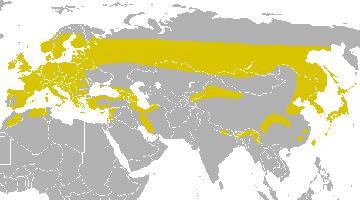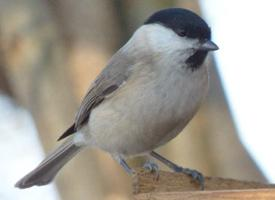
Weights and measures
| Length | 11 cm |
|---|---|
| Weight | 8 g |
| Wingspan | 18 cm |
Biological data
| Lifespan | 2 r |
|---|
State of endangerment
| Non Endangered |
Animal description
The Coal Tit (Periparus ater), a diminutive yet captivating bird, belongs to the tit family Paridae. This species is widely distributed across temperate Europe and Asia, from the Iberian Peninsula and Ireland in the west, stretching to the Kamchatka Peninsula and Japan in the east. It is known for its adaptability to various habitats, including deciduous and coniferous forests, gardens, and parks, making it a familiar sight in both rural and urban settings.Characterized by its petite stature, the Coal Tit measures approximately 10 to 11.5 cm in length and weighs between 7 to 10 grams. Despite its small size, this bird is easily recognizable by its distinctive plumage. The upper parts exhibit a sleek grey-black color, while its underparts are a contrasting off-white, creating a striking visual. Its most notable features include a prominent black cap and bib, which stand out against its white cheeks, and a white nape patch that is especially visible from behind.
The Coal Tit is an agile and active bird, often seen flitting among tree branches in search of food. Its diet primarily consists of insects, seeds, and nuts. During the colder months, it demonstrates remarkable ingenuity by stashing away food in various crevices and bark to retrieve later, showcasing an impressive memory.
Breeding season for the Coal Tit is a time of nest-building and nurturing. The nest, often hidden away in a tree hole or similar secluded spot, is constructed with moss, hair, and feathers, creating a cozy environment for its eggs. The female lays a clutch of 7 to 9 eggs, which she incubates for about 14 to 16 days. Both parents are involved in feeding the altricial young, which fledge approximately 18 to 21 days after hatching.
Vocally, the Coal Tit is as expressive as it is in its physical activities. Its song is a simple yet melodious repetition of notes, and its call, a sharp "pitchu-pitchu," is a common sound in its habitat, particularly during the breeding season.
Despite facing threats from habitat loss and climate change, the Coal Tit has shown resilience, partly due to its ability to adapt to different environments. It is currently listed as Least Concern on the IUCN Red List, indicating a stable population. However, ongoing conservation efforts are essential to ensure that this charming bird continues to thrive in its natural and adopted habitats.
In summary, the Coal Tit is a small, agile bird with a distinctive appearance and a wide range, found in a variety of woodland and urban settings. Its adaptability, intriguing behaviors, and cheerful presence make it a cherished species among birdwatchers and nature enthusiasts alike.
Map of occurrence

New photos of animals
Top 10 animals
- Dolphin gull (Leucophaeus scoresbii)
- Japanese macaque (Macaca fuscata)
- Stone loach (Barbatula barbatula)
- Greek tortoise (Testudo graeca)
- Diana monkey (Cercopithecus diana)
- Galápagos tortoise (Geochelone nigra complex)
- Russian tortoise (Testudo horsfieldii)
- Moustached guenon (Cercopithecus cephus)
- Galápagos penguin (Spheniscus mendiculus)
- Common flying dragon (Draco volans)


